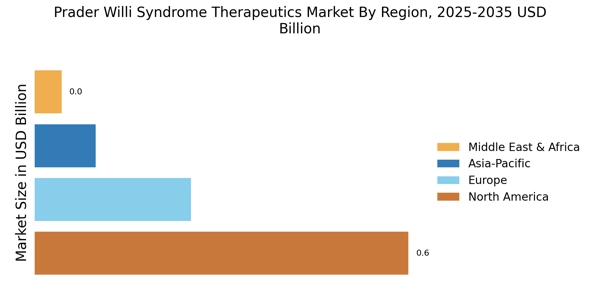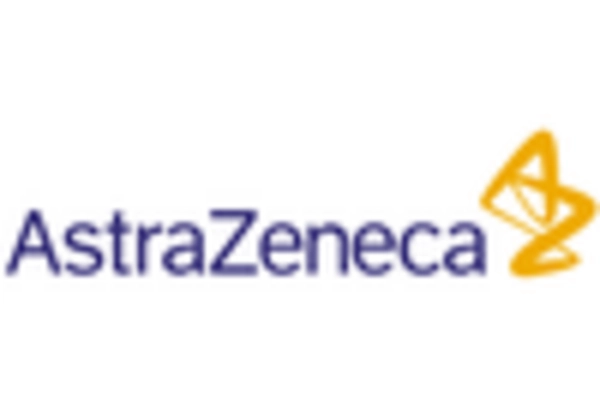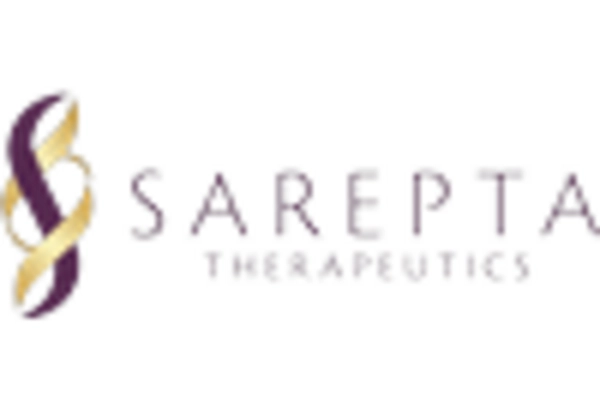Advancements in Genetic Research
The Prader Willi Syndrome Therapeutics Market is witnessing a surge in advancements in genetic research, which plays a pivotal role in understanding the underlying mechanisms of the syndrome. Recent studies indicate that genetic mutations affecting the 15th chromosome are responsible for the disorder. This knowledge has led to the development of targeted therapies aimed at addressing specific genetic anomalies. As researchers continue to explore gene therapy options, the potential for innovative treatments increases. The market is projected to grow as these advancements translate into clinical applications, potentially improving patient outcomes and quality of life. Furthermore, the integration of genetic testing in clinical settings may enhance early diagnosis, thereby expanding the therapeutic market for Prader Willi Syndrome.
Growing Demand for Personalized Medicine
The Prader Willi Syndrome Therapeutics Market is increasingly influenced by the growing demand for personalized medicine. Patients with Prader Willi Syndrome exhibit a range of symptoms and severity, necessitating tailored treatment approaches. This trend is reflected in the rising investment in research and development aimed at creating individualized therapies. According to recent estimates, the personalized medicine market is expected to reach substantial figures, indicating a shift towards more effective treatment modalities. Pharmaceutical companies are likely to focus on developing drugs that cater to the unique genetic profiles of patients, thereby enhancing therapeutic efficacy. This shift towards personalized treatment is anticipated to drive growth in the Prader Willi Syndrome Therapeutics Market, as stakeholders recognize the importance of customized care.
Increased Funding for Rare Disease Research
The Prader Willi Syndrome Therapeutics Market benefits from increased funding for rare disease research, which has gained momentum in recent years. Governments and private organizations are allocating more resources to understand and treat rare genetic disorders, including Prader Willi Syndrome. This influx of funding is likely to accelerate the development of new therapies and clinical trials, fostering innovation within the market. Recent reports suggest that funding for rare disease research has seen a significant rise, with millions being invested annually. This financial support not only aids in the discovery of novel treatment options but also encourages collaboration among researchers, healthcare providers, and pharmaceutical companies, ultimately enhancing the therapeutic landscape for Prader Willi Syndrome.
Enhanced Awareness and Education Initiatives
The Prader Willi Syndrome Therapeutics Market is experiencing growth due to enhanced awareness and education initiatives aimed at both healthcare professionals and the public. Increased understanding of Prader Willi Syndrome has led to earlier diagnosis and intervention, which are crucial for effective management. Organizations dedicated to raising awareness are actively promoting educational programs, workshops, and resources that inform stakeholders about the syndrome's complexities. This heightened awareness is likely to result in more patients seeking treatment, thereby expanding the market. Furthermore, as healthcare providers become more knowledgeable about the syndrome, they may be more inclined to explore and recommend available therapeutic options, contributing to the overall growth of the Prader Willi Syndrome Therapeutics Market.
Rising Prevalence of Obesity and Metabolic Disorders
The Prader Willi Syndrome Therapeutics Market is also impacted by the rising prevalence of obesity and metabolic disorders, which are closely associated with the syndrome. Individuals with Prader Willi Syndrome often experience hyperphagia and obesity, leading to various health complications. As the global obesity epidemic continues to escalate, there is a growing recognition of the need for effective therapeutic interventions. This trend is likely to drive demand for treatments specifically targeting weight management and metabolic health in Prader Willi Syndrome patients. The market may see an increase in the development of pharmacological options aimed at addressing these challenges, thereby expanding the therapeutic offerings available to patients and healthcare providers.


















Leave a Comment